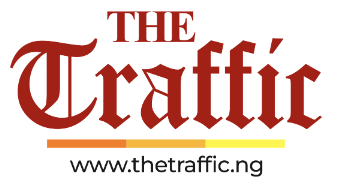Africa’s $777bn Pension, Insurance Assets Hold Key to Infrastructure Boom — AFC
Africa’s $777bn Pension, Insurance Assets Hold Key to Infrastructure Boom — AFC
By Achimi muktar
Africa is sitting on a $777 billion treasure chest — and it could be the key to unlocking a new era of economic growth and infrastructure development across the continent.
That’s the central message from a groundbreaking new report by the Africa Finance Corporation (AFC), which argues that Africa’s vast pension funds and insurance assets remain one of the most underused tools for fueling long-term development.
The AFC’s State of Africa’s Infrastructure (SAI) Report reveals that while institutional investors — including pension funds and insurance companies — collectively manage an eye-watering $777 billion in assets, much of this capital is locked away in short-term, low-yield investments, rather than being deployed into critical infrastructure and industrial projects that could drive economic transformation.
“With over $777 billion in assets under management, pension funds and insurance companies hold substantial potential to finance long-term development. Yet a large share remains allocated to short-term, low-risk instruments,” the report notes.
Reform momentum is building
The report also highlights that some African markets, including Nigeria, Namibia, South Africa, and Kenya, are beginning to implement key regulatory reforms aimed at redirecting pension and insurance savings toward infrastructure development.
This shift signals a growing recognition among African policymakers that local institutional investors can play a pivotal role in closing the continent’s yawning infrastructure funding gap.
The untapped power of pension and insurance sectors
Despite their enormous potential, Africa’s pension and insurance sectors remain significantly underutilized, the AFC warns.
Across 28 African countries, insurance assets alone exceed $320 billion, with South Africa accounting for nearly 80% of this total. Yet, insurance penetration rates remain low in most markets — and where coverage does exist, it is concentrated in short-term, non-life segments such as auto, health, and business insurance.
Life insurance — the segment most naturally aligned with long-term investment — represents less than 30% of total insurance policies in many African countries.
The AFC identifies several structural barriers holding back pension and insurance market growth:
High rates of informal employment, which excludes millions from formal pension schemes
Limited financial literacy, preventing wider citizen participation
Low public trust in financial institutions
Lack of mandatory savings frameworks in many markets
Pension funds: a $200 billion opportunity
Africa’s pension system faces similar hurdles. Across much of sub-Saharan Africa, up to 90% of workers are employed in the informal sector, leaving them outside formal pension coverage.
However, the report argues that even a modest formalization of Africa’s vast informal economy could unlock billions in new domestic savings.
According to IMF estimates, formalizing just the lower bound of informal employment could generate more than $200 billion in new formal savings — funds that could then be mobilized for nation-building investments.
What needs to change?
To fully harness this hidden goldmine of capital, the AFC urges African governments to undertake bold policy and structural reforms. These should include:
✅ Encouraging institutional investors to allocate a larger share of assets toward long-term investments
✅ Expanding pension and insurance participation through financial education and market transparency
✅ Implementing mandatory savings frameworks to drive wider coverage
The prize is enormous. By unlocking their own financial resources, African countries could significantly reduce reliance on external debt, fund world-class infrastructure, boost industrial growth, and transform the continent into a thriving, globally competitive investment hub.
As the AFC report makes clear: Africa already has the money. Now it’s time to put it to work.


















